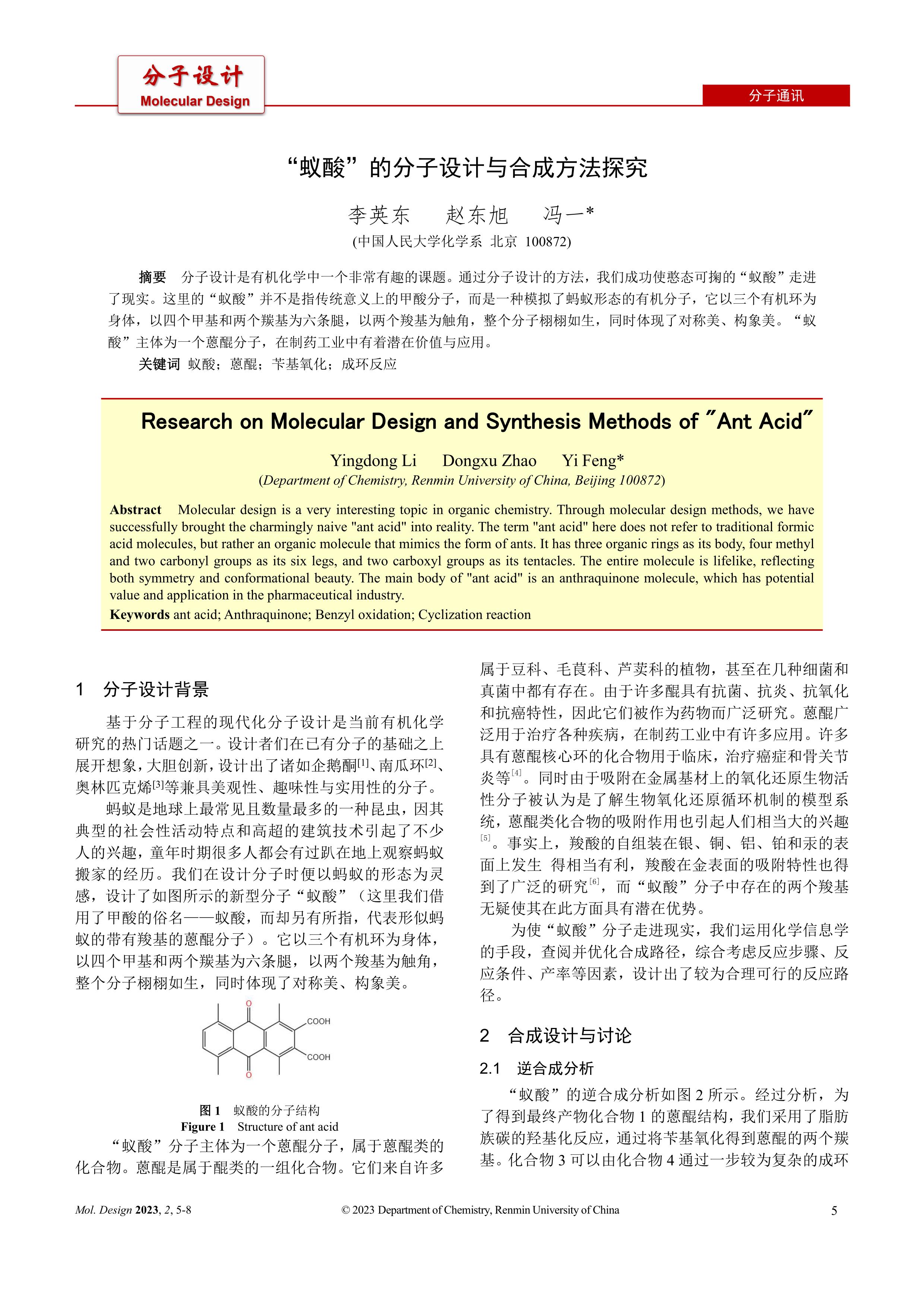Research on Molecular Design and Synthesis Methods of "Ant Acid"
Keywords:
ant acid, Anthraquinone, Benzyl oxidation, Cyclization reactionAbstract
Molecular design is a very interesting topic in organic chemistry. Through molecular design methods, we have successfully brought the charmingly naive "ant acid" into reality. The term "ant acid" here does not refer to traditional formic acid molecules, but rather an organic molecule that mimics the form of ants. It has three organic rings as its body, four methyl and two carbonyl groups as its six legs, and two carboxyl groups as its tentacles. The entire molecule is lifelike, reflecting both symmetry and conformational beauty. The main body of "ant acid" is an anthraquinone molecule, which has potential value and application in the pharmaceutical industry.
References
Chen, L.; Qu, B. Food Sci. Nutr. 2021, 9, 6194-6212.
Miyahara, Y.; Goto, K.; Oka, M.; Inazu, T. Angew. Chem. Int. Ed. 2004, 43, 5019.
Gross, L.; Mohn, F. Science. 2009, 325, 1110-1114.
Raghuveer, D.; Pai, V. V.; Murali, T. S.; Nayak, R. Chem. Select. 2023, 8, e202204537.
Li, D.; Jia, S.; Essy K. F.; Xu, H.; Wang Y.; Deng W. Appl. Surf. Sci. 2016, 367, 153-159.
Han, SW; Joo, SW; Ha, TH; Kim, Y; Kim, K. J. Phys. Chem. B. 2000, 104, 11987-11995.
Takahashi, T.; Li, S.; Huang, W. J. Org. Chem. 2006, 71, 7967-7977.
王积涛; 王永梅; 张宝申; 胡青眉; 庞美丽, 有机化学, 第三版.; 南开大学出版社: 天津, 2009, pp 122.
Saito, S.; Yamamoto, Y. Chem. Rev. 2000, 100, 2901-2915.
Kumar, R.A.; Maheswari, C.U. Adv. Synth. Catal. 2011, 353, 401-410.
Hermann, K.; Sardini, S. J. Org. Chem. 2013, 78, 2984-2991.





